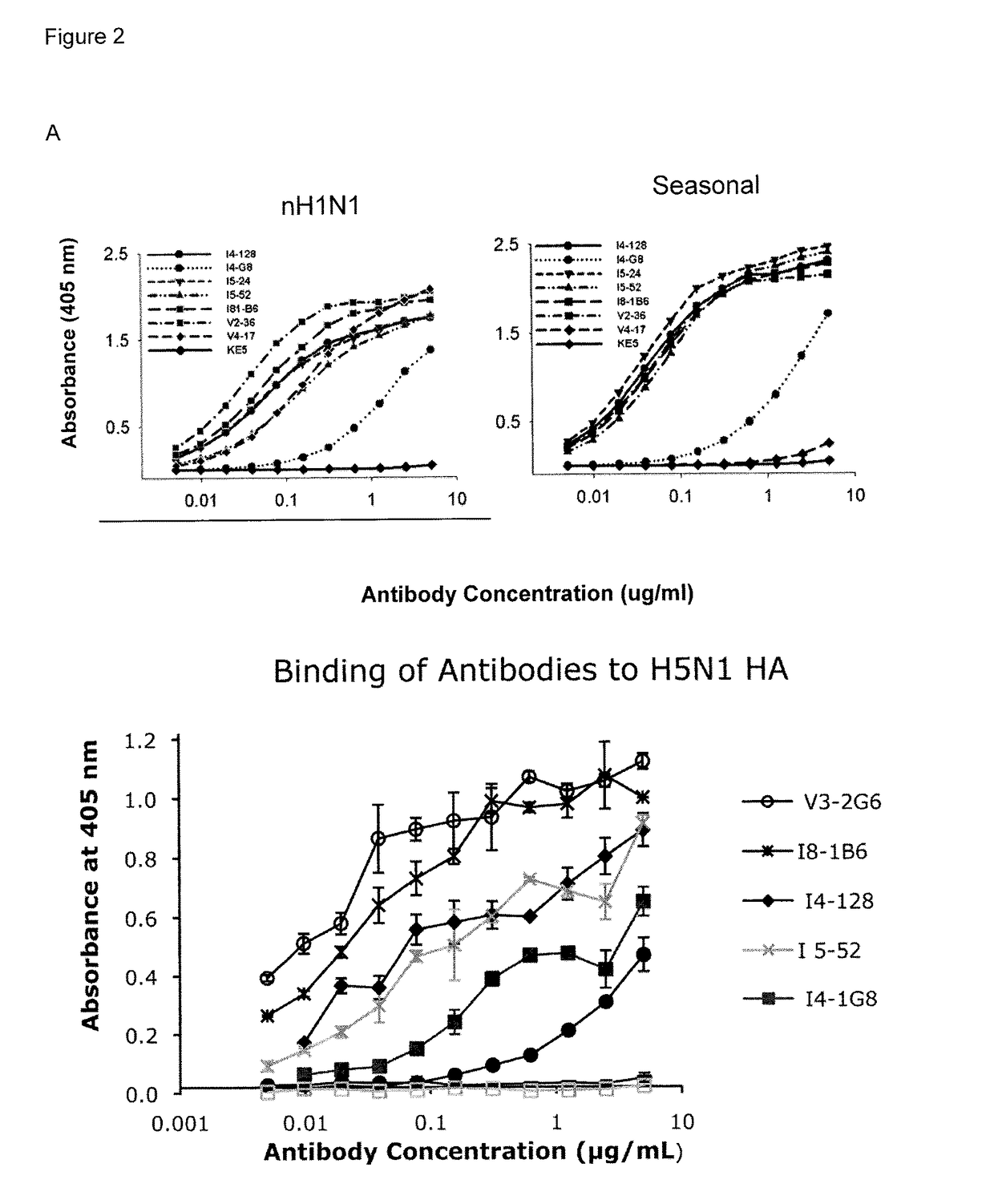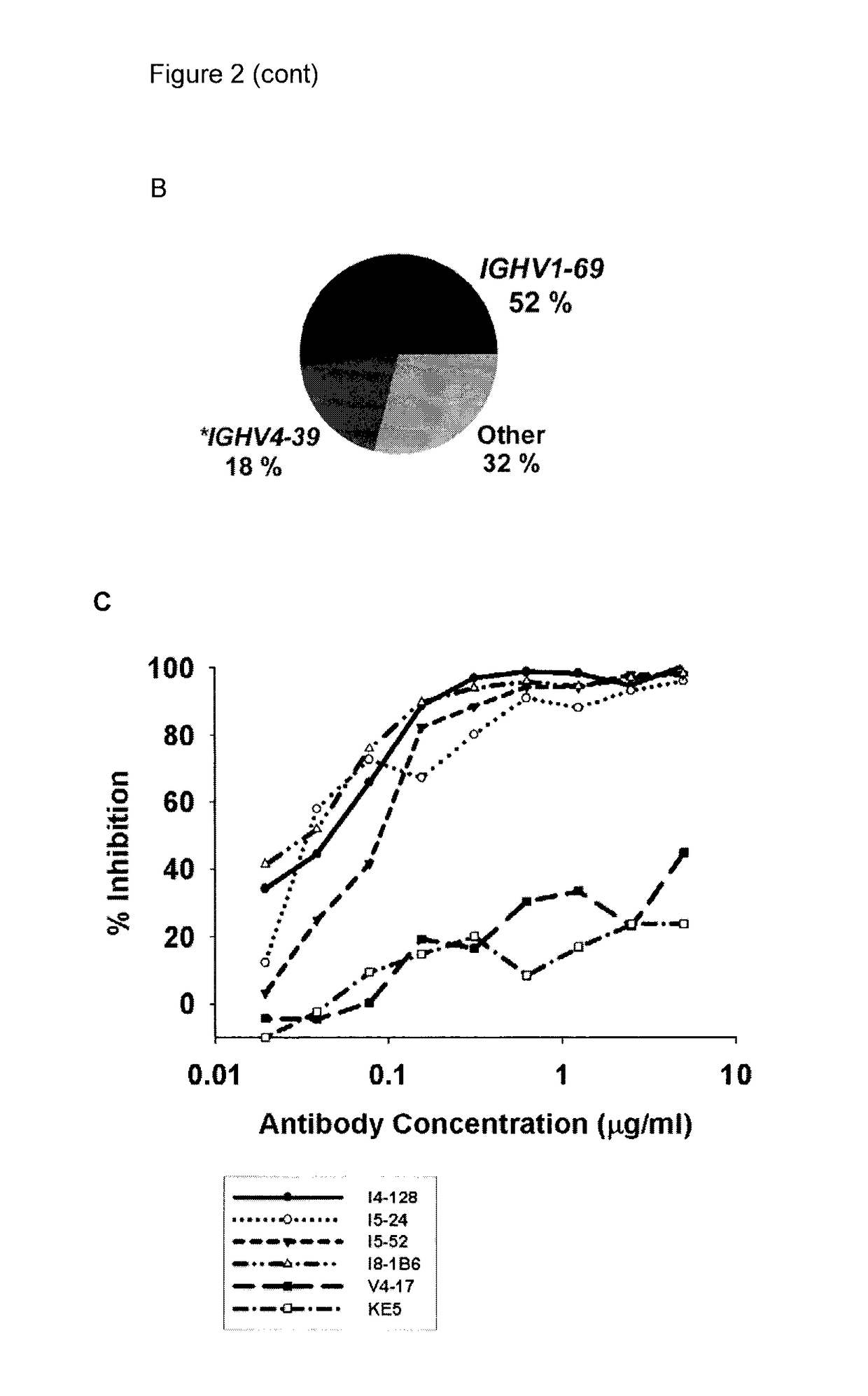Cross-protective pathogen protection, methods and compositions thereof
a technology of immunological compositions and pathogen protection, applied in the direction of virus peptides, biochemistry apparatus and processes, peptide sources, etc., can solve the problems of serious human infections, pandemic, and easy error in the replication of the influenza virus genom
- Summary
- Abstract
- Description
- Claims
- Application Information
AI Technical Summary
Benefits of technology
Problems solved by technology
Method used
Image
Examples
examples
[0245]Three approaches were used to generate human monoclonal antibodies (mAbs) that reacted with HA of the soluble ectodomain of the nH1N1 influenza virus (snH1 HA) (FIG. 1). First, antibodies were randomly cloned from newly generated plasmablasts (PB) circulating in the blood of recently infected patients. This approach was based upon observations that ˜7 days after vaccination, PB that secrete antibodies specific for the vaccine appear in the blood (Barington et al. 1990; Heilmann et al. 1987) and form a significant fraction of the total PB (Odendahl et al. 2005; Wrammert et al. 2008), and upon techniques that the present inventor had previously used to obtain monoclonal antibodies from blood-borne PB by RT-PCR and cloning and expression of the DNA encoding the antigen-binding site (Babcook et al. 1996). In the absence of data on the kinetics of entry of infection-specific PB into the blood during infections, blood was collected from subjects with laboratory-confirmed nH1N1 infec...
PUM
| Property | Measurement | Unit |
|---|---|---|
| pH | aaaaa | aaaaa |
| concentration | aaaaa | aaaaa |
| time | aaaaa | aaaaa |
Abstract
Description
Claims
Application Information
 Login to View More
Login to View More - R&D
- Intellectual Property
- Life Sciences
- Materials
- Tech Scout
- Unparalleled Data Quality
- Higher Quality Content
- 60% Fewer Hallucinations
Browse by: Latest US Patents, China's latest patents, Technical Efficacy Thesaurus, Application Domain, Technology Topic, Popular Technical Reports.
© 2025 PatSnap. All rights reserved.Legal|Privacy policy|Modern Slavery Act Transparency Statement|Sitemap|About US| Contact US: help@patsnap.com



